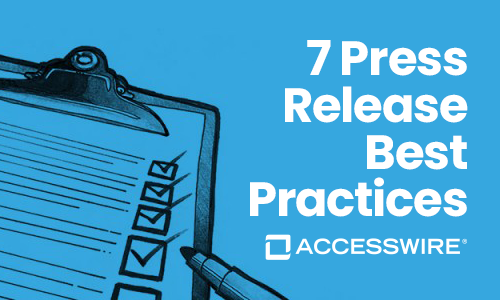How to Promote Diversity, Equity, and Inclusion
Your company’s leadership has kept an eye on the countless studies involving the benefits of how to promote diversity, equity, and inclusion in the workplace. They have seen the percentages of companies polled who respond that once their DEI initiatives were in place, there were several noticeable improvements: Not only did the public perception of their respective companies improve, but they had better employee engagement, better company morale, and their Human Resources departments were able to attract, recruit, and hang on to, a higher level of talent.
Now, your company leaders are ready to start their own DEI program…and you are a part of the team that will create and roll out these DEI efforts. Congratulations!
The first thing to understand is that there are no strict rules for such an undertaking…but there are important considerations to keep in mind when it comes to how to promote diversity, equity, and inclusion in the workplace.
Consider this your lucky day…we have several tips that can help you and your co-workers better understand and navigate these DEI efforts!
1. Understanding our “unintended biases.”
Consciously, many of us think of ourselves as “open-minded,” “sensitive,” “inclusive,” or “non-judgmental” in our everyday work and home life – and we act accordingly, based on our individual efforts to be fair-minded about our colleagues, business partners, family members, loved ones and friends. But subconsciously, most of us carry something called “unintentional bias” from incidents that have been hidden away in the recesses of our minds or were formed after hearing/seeing bias throughout our lives.
Realizing that within us exists some level of “unintentional bias” goes a long way toward bringing awareness of such thought patterns. So, when presenting your employees with the best practices for DEI, be sure to talk about this kind of unconscious bias openly and honestly.
One exercise you can implement for yourself (and suggest for your company’s employees) is keeping a personal journal on your phone or computer of thoughts, stereotyping, or assumptions you make about other people during any given day:
- What is it about the person whom you feel a bias toward? Is it the way he/she looks or sounds that causes you to feel that way?
- Can you think back to a place and time when you have had similar thoughts before now?
Understanding our own unconscious bias can serve as a great place to start when it comes to addressing the “unintentional bias” that lives within us all. It is also a great way of encouraging an inclusive workplace.
2. Using technology to train employees about bias.
There is a saying that learning takes a lifetime for those who have curiosity about the world. But when it comes to understanding and unlearning our lifelong thinking patterns, being curious can sometimes result in an embarrassing or uncomfortable experience.
Imagine if today, you were asked to stand up in front of your colleagues and talk about your personal thoughts and/or feelings from the past that were not necessarily a shining example of your tolerance, kindness and/or sense of compassion. Would you worry about being judged, regardless of whether that judgment was fair since today’s “you” no longer thinks or acts in such a way? Such a situation could cause a person to become defensive and reactive – which is the opposite outcome that DEI practices and training should have.
Here's where technology can be a useful tool. Rather than putting people on the spot in a classroom setting and asking them to discuss their “unintentional biases,” doing so via technology can protect your employees’ privacy, promote better employee engagement, and can also help them learn about DEI without worrying about external perceptions. Emphasizing that no one is a bad person for having “unintentional bias” is key to learning about themselves and others. Integrate into your training DEI-related videos and create anonymous surveys or questionnaires – efforts like these can facilitate a more honest, personal examination of your employees’ own thoughts and feelings, and can pave the way for them to become more “culturally humble.
3. Create pay equity in your organization.
In 2020, the Pew Research Center released a study confirming that pay equity in the U.S. is still an unlevel playing field between men and women in the same jobs: Women earn 84 percent less than their male counterparts. “Based on this estimate, it would take an extra 42 days of work for women to earn what men did in 2020,” according to the study. What’s more, this study shows that bringing women closer to pay equity has been stalled for the last 15 years.
Inclusive leadership that is planning to fully invest in DEI initiatives, should include equal opportunity and pay equity. In the 21st Century, there should be no justification for anything less than equal pay for equal work.
4. Be strategic about your Diversity, Equity, and Inclusion initiatives.
Training new and existing employees about your DEI goals and practices is not a fad, nor is it pandering to any imaginary “special interest” group; it is simply the right thing to do. However, without a developed strategy behind DEI training, you might as well take wads of cash and throw it out the window. Inclusive workplace culture is a commitment that requires more than just planning what day and time to teach employees about it.
Diversity training done right should help employees understand how our differences can impact a company, for better and worse…and the educational components should be ongoing; just as situations in the world change, so do workplace situations, and keeping the training as current as possible will go a long way to help your employees grasp your overall DEI goals. One way to accomplish that is by including scenarios in the training that are directly relevant to your company or your industry. You can employ internal resources or join forces with a consulting organization that can customize your DEI program.
Most importantly, it is imperative that your company’s inclusive leadership communicate why DEI training is happening, what problems it solves, and what to expect from the experience. When employees understand the motivations of their leaders, they are more likely to be receptive to participating.
5. Acknowledge cultural holidays.
Want to put the “I” in “Inclusion?” Practice what you preach.
When it comes to holidays, one size does not fit all. Offering a few “floating holidays” throughout the year to your company’s employees could mean the difference between someone spending time with family during celebrations that are meaningful to them, and missing gatherings because their workplace does not recognize or accommodate such time off.
One idea that is notably popular in companies that operate around the clock is to ask for volunteers to work during different holidays or familial celebrations taken by their colleagues, to enable employees of different cultures and backgrounds to spend time with family or friends; in exchange, those co-workers who volunteer to cover someone else’s shift can receive the same in return, should an important holiday or event arise.
Another idea for inclusive company culture is to make information about holidays from other cultures available on your company’s intranet, to educate your employees about celebrations in other parts of the world; doing so can foster a more meaningful understanding and appreciation of our collective cultural differences and diverse backgrounds.
6. Flexibility is the key to employee satisfaction.
Prior to the Covid-19 pandemic, we could not have foreseen how allowing employees to work from home could translate into a happier, healthier workforce. Now, here we are, two years later, and more than ever before, employers around the world are realizing that becoming flexible about where their employees were seated during their shifts was not the doom of corporate civilization. Employers who espoused an “only in-person” workplace are now able to entertain the idea of hiring remote employees.
What was the key to such a sea change? Flexibility.
If your company is considering enacting DEI initiatives, flexibility is likely part of its culture…and that is a good thing. Being flexible in the workplace goes together with a successful roll-out of a program involving diversity, equity, and inclusion. Keep up the good work!
One final suggestion…
When you are ready to roll out your DEI program, we recommend you tell the world your news – and keep reporting on your company’s progress and innovations that come from your program! ACCESSWIRE’s press release distribution service is available 24/7 to help you get your company news into the hands of audiences and journalists you wish to attract.
Similar Blog Posts
PRODUCTS
ACCESSWIRE | All Rights Reserved




